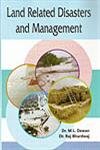Land Related Disasters and Management -Hardcover
Land Related Disasters and Management -Hardcover
Couldn't load pickup availability
The rapid downslope movement of surface materials under gravitational influences represents an important group of environmental hazards, especially in mountainous terrain. Mass movement hazards are caused by large volumes of rock mixed with earth, snow or ice that move at high velocity under the impetus of gravity. Depending on the dominant material, they are known as rock falls, landslides (rock and soil) or avalanches (snow and ice}. There can be few countries where these processes do not exist. The hazard is currently increasing worldwide as land hunger forces new developments on to unstable slopes. Mass movements may be triggered by either seismic activity or atmospheric events. To that extent, this hazard lies at the interface between endogenous and exogenous earth processes. Some of the largest recorded events have been earthquake related; these are treated previously. During the early 1970s, an average of nearly 600 people per year were killed by slope failures worldwide, with some 90 per cent of these deaths in the regions around the Pacific Basin. This zone is particularly susceptible to mass movements because of the combinations of rock type, steep terrain, heavy typhoon rainfall, rapid land use change and high population density. However, it is likely that most of these deaths would be associated with slope failures following earthquakes. Economic losses due to landslides have been estimated at more than $1 billion per year in several countries. In the United States, they threaten public safety in more than half the states, causing 25-50 deaths per year.
Share

